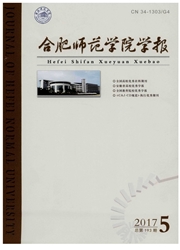

 中文摘要:
中文摘要:
量词“束”和“捆”在过程性上存在着差异。从起点看,“束”用于较细的长条物,“捆”用于较粗的长条物;从途径看,“束”为束缚而成,“捆”为捆绑而成;从终点看,“束”的集合体为细长状,“捆”的集合体为粗大状。“束”和“捆”的差异虽然在本质上是共时的,但也和语言的历史发展密切相关。
 英文摘要:
英文摘要:
Classifiers "Shu" (bunch)and "Kun"( binding) are different in the process of becoming the final so-called things. At the starting point, "Shu" (bunch,~ means selecting long pieces of things which are thinner, while "Kun" ( binding) thicker. About the approach, "Shu" (bunch) means tying up things, while "Kun"(binding) bundling things. At the ending point, the final products of "Shu" (bunch) in the form of an aggregation look thin and long, while "Kun" (binding) thick and large. The difference between "Shu" (bunch) and "Kun"(binding) is basically synchronic and related closely to the historical development of language.
 同期刊论文项目
同期刊论文项目
 同项目期刊论文
同项目期刊论文
 期刊信息
期刊信息
